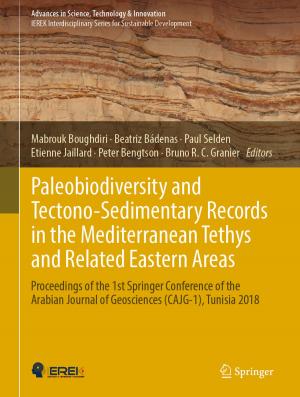Climate Gradients and Biodiversity in Mountains of Italy
Nonfiction, Science & Nature, Science, Biological Sciences, Ecology, Nature, Environment, Environmental Conservation & Protection| Author: | ISBN: | 9783319679679 | |
| Publisher: | Springer International Publishing | Publication: | November 27, 2017 |
| Imprint: | Springer | Language: | English |
| Author: | |
| ISBN: | 9783319679679 |
| Publisher: | Springer International Publishing |
| Publication: | November 27, 2017 |
| Imprint: | Springer |
| Language: | English |
This volume gathers case studies on plant diversity from selected, representative mountain systems of Italy (Mediterranean and temperate zones), while also addressing the biodiversity of avian fauna. For the Alps, Wilhalm and Prosser examine the species biodiversity (also with the help of highly detailed location maps) of the sector of the central Alps that corresponds to the basin of the Adige, including some nearby valleys, between the watershed to the north and the Prealps to the south (Alto Adige and Trentino). In turn, Pedrotti investigates the vegetation series of the same territory in relation to the three climatic sectors identified: prealpine, alpine and endoalpine. Aleffi then explores the relationships between the distribution of a number of species of bryophytes and the main mesoclimatic gradients along a transect through the Valle dell’ Adige between 46°40'N and 45°42'N. Lastly, Siniscalco studies the ways in which alien species are now invading the western Alps, which to date have remained largely unaffected by this phenomenon, unlike the plains and hills.
For the Apennines, Ferrari studies the tree line and the biodiversity of the vegetation of the northern Apennines; for the mountains of Sicily, Bazan conducts a diachronic analysis of the beech forests of the Monti Nebrodi.
The contribution by Venanzoni interprets the chorology of associations of the *Magnocaricetalia *order throughout Italy, relating it to the climatic and geographic gradients. He describes a total of 55 associations, reporting on the distribution in the temperate zone (differentiating between the alpine and continental) and the Mediterranean zone for each of them.
Cianfaglione presents the Signal Project Italian site. This project investigates the effects of extreme weather events on secondary grassland and the role of selected alien species, mowing, biodiversity, productivity and functional traits, in Italy and along a European gradient.
For the Marches Region, Forconi describes the biodiversity of the avian fauna in relation to the altitudinal gradient and the potential vegetation.
This volume gathers case studies on plant diversity from selected, representative mountain systems of Italy (Mediterranean and temperate zones), while also addressing the biodiversity of avian fauna. For the Alps, Wilhalm and Prosser examine the species biodiversity (also with the help of highly detailed location maps) of the sector of the central Alps that corresponds to the basin of the Adige, including some nearby valleys, between the watershed to the north and the Prealps to the south (Alto Adige and Trentino). In turn, Pedrotti investigates the vegetation series of the same territory in relation to the three climatic sectors identified: prealpine, alpine and endoalpine. Aleffi then explores the relationships between the distribution of a number of species of bryophytes and the main mesoclimatic gradients along a transect through the Valle dell’ Adige between 46°40'N and 45°42'N. Lastly, Siniscalco studies the ways in which alien species are now invading the western Alps, which to date have remained largely unaffected by this phenomenon, unlike the plains and hills.
For the Apennines, Ferrari studies the tree line and the biodiversity of the vegetation of the northern Apennines; for the mountains of Sicily, Bazan conducts a diachronic analysis of the beech forests of the Monti Nebrodi.
The contribution by Venanzoni interprets the chorology of associations of the *Magnocaricetalia *order throughout Italy, relating it to the climatic and geographic gradients. He describes a total of 55 associations, reporting on the distribution in the temperate zone (differentiating between the alpine and continental) and the Mediterranean zone for each of them.
Cianfaglione presents the Signal Project Italian site. This project investigates the effects of extreme weather events on secondary grassland and the role of selected alien species, mowing, biodiversity, productivity and functional traits, in Italy and along a European gradient.
For the Marches Region, Forconi describes the biodiversity of the avian fauna in relation to the altitudinal gradient and the potential vegetation.















